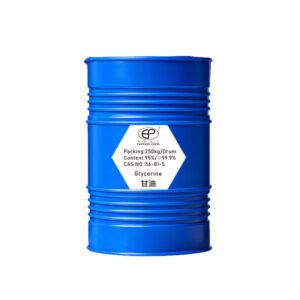I. Introduction
Imagine a world where the colors on our beloved novels, fashionable tees, or even the alluring posters at the cinema were non-existent. Pretty bland, right? Think of solvents in the printing and dyeing industry as the magic potion that makes the world around us pop with color. Stick with me, and I’ll paint you a picture (pun intended) of what these fantastic solvents are all about.
Table of Contents
| Sr# | Headings |
|---|---|
| 1 | Understanding Solvents |
| 2 | Common Solvents Used in Printing and Dyeing |
| 3 | Solvent Safety and Regulations |
| 4 | Solvent Handling and Application Techniques |
| 5 | Troubleshooting and Best Practices |
| 6 | Industry Innovations and Future Trends |
| 7 | Summary |
| 8 | Frequently Asked Questions (FAQs) |
II. Understanding Solvents
Have you ever wondered how your favorite band t-shirt gets its iconic graphics?** Solvents are the silent artists behind them!
- Definition: At its core, a solvent is like the universal adapter in your travel kit. It ensures things mix and blend seamlessly. In the world of colors, it carries the dye or ink and guarantees its smooth spread.
- Types: Picture an artist’s vast array of paintbrushes. Each one serves a purpose, much like the various solvents in the industry.
- Factors for selection: It’s like picking the right shoes for an occasion. You’d factor in comfort, style, and, of course, the weather. Similarly, it is crucial to consider a solvent’s evaporation rate, pigment compatibility, and green quotient.
III. Common Solvents Used in Printing and Dyeing
A. Water-based Solvents: Remember how water brings life to a thirsty plant? Similarly, in the world of printing and dyeing, it’s the elixir for colors!
- Advantages: They’re like the superheroes of the solvent world – clean, green, and less mean.
- Applications: Perfect for giving your fabrics a new lease of color and bringing precision to some inkjet prints.
B. Organic Solvents: These are the power players. They’re a versatile bunch, from the robust toluene to the nimble acetone.
- Overview: Think of them as coffee lovers who need their specific brew. Organic solvents dissolve many compounds that plain old water would shy away from.
- Comparisons: They’re incredibly effective sports cars but come with a carbon footprint.
C. Solvent Blends: Imagine a chef’s special – a blend of the best ingredients to create a masterpiece.
- Explanation: Mixing solvents is an art. It’s about complementing strengths and masking weaknesses.
- Examples: A cocktail of alcohols and esters can balance drying time and print clarity.
IV. Solvent Safety and Regulations
A. Health and Safety Measures:
Remember when mom said, “Safety first!”? She was onto something!
- Emphasizing ventilation and bathing in protective gear is as essential as sunscreen on a sunny day.
- Store them as you would a treasured wine collection – with care.
- Continuous training? Think of it as recurrent driving lessons ensuring everyone’s safety.
B. Environmental Regulations:
Because our planet deserves some TLC!
- Stay updated like you would with your favorite TV show’s episodes. Know the regulations.
- Whenever possible, root for the green team. Opt for eco-friendly alternatives.
- Ensure you’re always in the good books by adhering to sustainability norms.
V. Solvent Handling and Application Techniques
A. Solvent Mixing Procedures:
Creating the perfect solvent mix is more challenging than whipping a smoothie.
- Stick to the recipe. Follow guidelines for that ‘just right’ consistency.
- It’s not a surprise potluck. Avoid mixing incompatible solvents.
B. Application Methods:
Each method is like a dance move, from brushing to spraying, and you need to pick the right one for the tune.
- Selection criteria? Material, the desired finish, and, of course, the type of solvent.
VI. Troubleshooting and Best Practices
A. Common Issues with Solvent Application:
Life isn’t always a smooth ride, nor is solvent application.
- Watch out for hiccups like blotchy prints or rapid drying.
- The correct technique can save the day, ensuring minimal touch-ups.
B. Maintenance and Equipment Care:
Your tools are your trusted sidekicks. Treat them well.
- A regular check-up keeps them in prime condition.
- Cleanliness is next to godliness, mainly to avoid any color mix-ups.
VII. Industry Innovations and Future Trends
Tomorrow’s world promises a splash of sustainability and innovation.
- Brace yourself for game-changers like green solvents.
- Expect the industry to follow suit as we pivot towards a greener tomorrow.
VIII. Summary
Solvents are the unsung maestros in the vast canvas of the printing and dyeing universe. Choosing, handling, and wielding them might require mastery, but the results are nothing short of a masterpiece when done right.
IX. Frequently Asked Questions (FAQs)
Q1. What sets water-based solvents apart from organic ones?
A1. – It’s like tea versus coffee. Water-based solvents are the gentler, green option, while organic solvents pack a punch but can be a tad harsher.
Q2. Do eco-friendly solvents exist?
A2. – Absolutely! Think of them as the electric cars of the solvent world. Water-based ones and certain low-VOC organic solvents are Mother Nature-approved.
Q3. How do I pick the suitable solvent for my printing job?
A3. – It’s like pairing wine with cheese. Consider the material, the look you’re going for, and the solvent’s environmental credentials.
Q4. Which safety measures are a must when dealing with solvents?
A4. – Think of it as gearing up for skiing. Ventilate the area, wear protective gear, and store them carefully.
Q5. Is there an eco-friendly way to discard solvents?
A5. – Yes, indeed! It’s like recycling your soda cans. Adhere to local disposal regulations or explore solvent recycling options.








